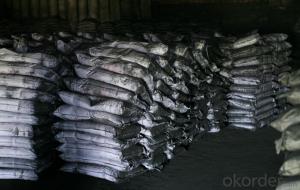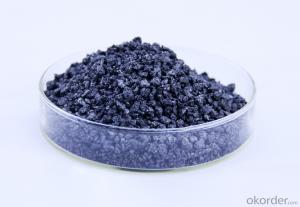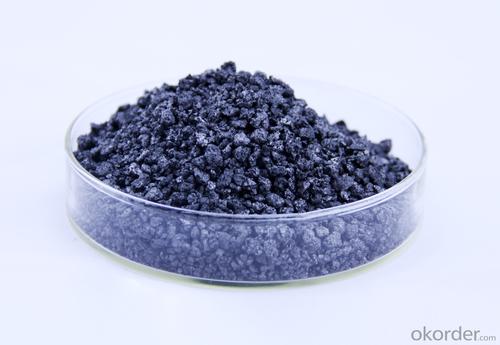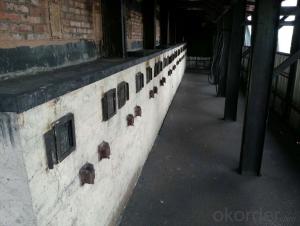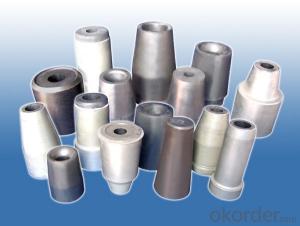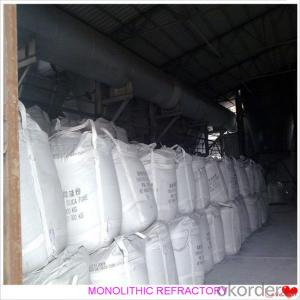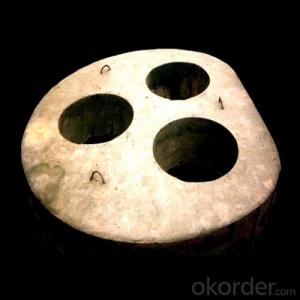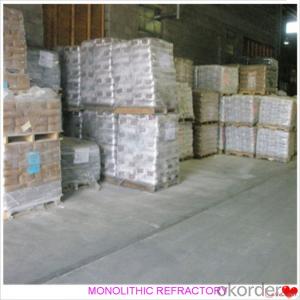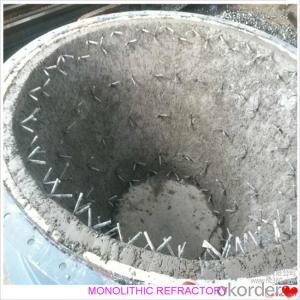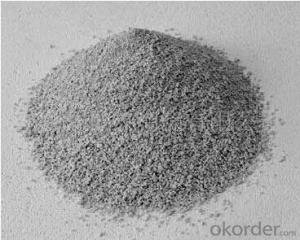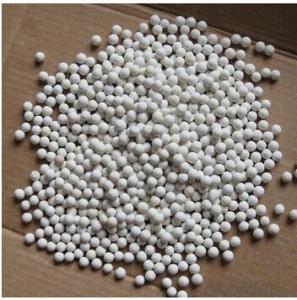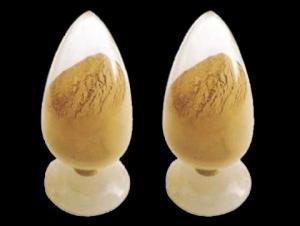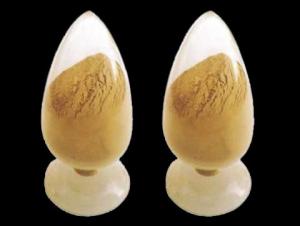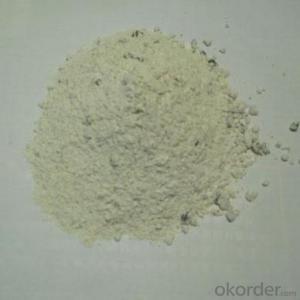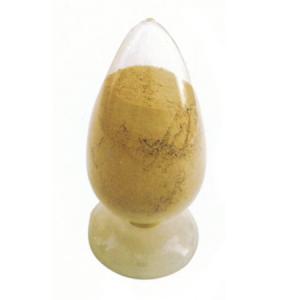Monolithic Refractories Low Nitrogen Carbon Raiser Electrode Scarps for Iron and Steel Industry
- Loading Port:
- Shekou
- Payment Terms:
- TT OR LC
- Min Order Qty:
- 20 m.t
- Supply Capability:
- 1000 m.t/month
OKorder Service Pledge
OKorder Financial Service
You Might Also Like
Factory Background
The factory is majorly running and operating carbon additive (pitch coke, calcined petroleum coke and anthracite), low nitrogen carbon additive, and brake pad making material. Company is the long term supplier of Sinosteel Corporation, Shanghai Carbon Corporation, the plant of SGL Group the Carbon Company in China and some largest special carbon products producing plants.
YUAI also supplies huge amout of high quality carbon additive and graphite carbon additive to steel plants, foundries and ferrotungsten plants. YUAI has been assigned by BAO STEEL as the only organization for processing pitch coke for export purpose. The group’s major products are constantly exported to Japan, Korea, Malaysia, South East Asia countries, Europe and America, which receive praises by our consumers.
The group has invested numbers of calcinators in Anhui China to ensure the capability of producing and processing huge amount of carbon additive. Further investment is on process. According to the orders from customers, YUAI is able to processing and providing different specifications of carbon additive and other products. To provide best quality of products and to offer customers most satisfied service is YUAI’s operating objectives.
Calcined Petroleum Coke
FC:98.5%min,
S:0.5%max
A:0.8%max
V:0.7%max
Mositure:0.5%max
Size:1-5mm
This product is mainly used in steel-making and foundry. Calcined Petroleum Coke
Calcined Petroleum Coke comes from delayed coke which extracted from oil refinery. Although Calcined Petroleum Coke contains a little bit higher level of sulfur and nitrogen than pitch coke, the price advantage still makes it widely used during steel-making and founding as a kind of carbon additive/carburant.
Technology:
Laborary Equpment
In our lab,we has a high precision balance,mullfe furnace,sample making machine, dring box,sulfur measurement instrument and other calibratiing equipments.As a result,before deliverung to our customers,our products have to pass a strict test to ensure the quality and components.The testing reports will be sent to our customers to confirm untill they satisfy with it.
Packaging & Delivery
Packaging Detail:25kg paper bag into 1t weaving bag 5kg, 10kg and 20kg weaving bag into 1t weaving bag 25kg weaving bag put on pallet covered with entanglement wrap product direct into packing bag 25kg paper bag put on pallet covered with entanglement Wrap 25kg weaving bag into 1t weaving bag.
Delivery Details: 7 days
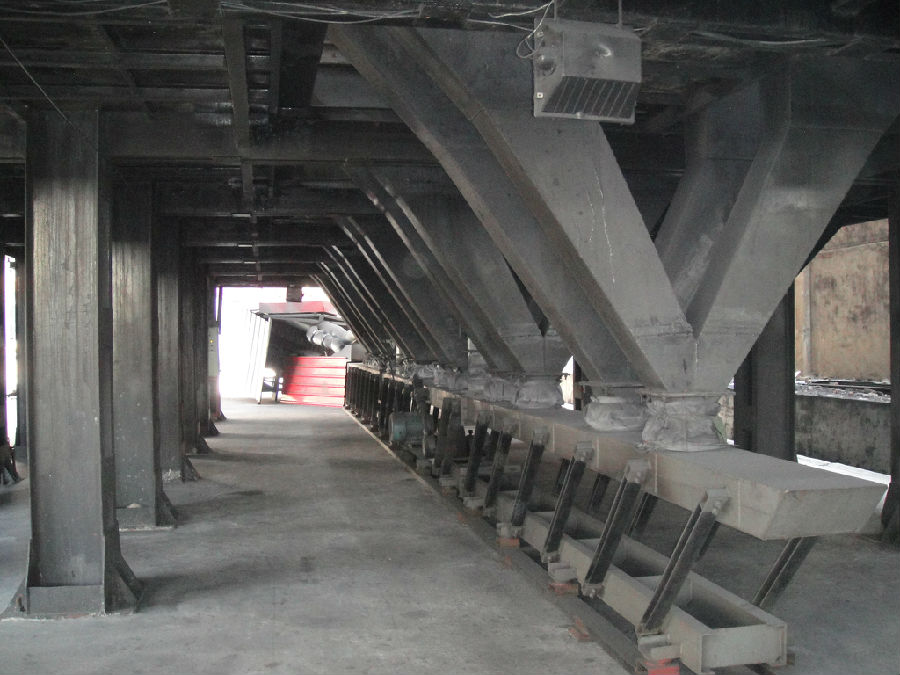
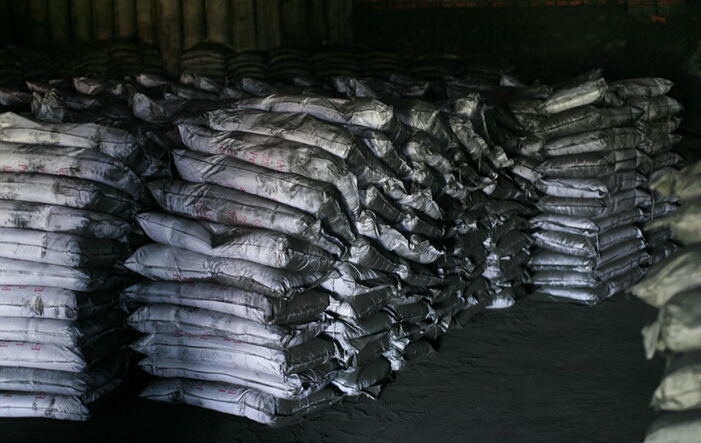
- Q: What are the recent developments in monolithic refractories for the iron and steel industry?
- Over the past few years, significant progress has been made in the field of monolithic refractories for the iron and steel industry. These refractories are vital in the production of iron and steel, as they provide insulation and withstand high temperatures in furnaces and other equipment. One major advancement is the development of advanced alumina-based castables. These castables offer exceptional thermal shock resistance, high strength, and excellent corrosion resistance, making them perfect for the iron and steel industry. They can endure extreme temperatures and mechanical stress, resulting in longer service life and less maintenance downtime. Another noteworthy development is the introduction of low-cement and ultra-low cement castables. Compared to traditional castables, these have reduced cement content, leading to improved refractory properties. They have higher hot strength, lower porosity, and increased resistance to slag and metal corrosion. This enhances productivity and efficiency in the iron and steel manufacturing processes. Moreover, insulating refractories have seen advancements in their usage. Insulating castables and bricks are now used to line ladles, tundishes, and other equipment, providing better insulation and energy efficiency. These materials help reduce heat loss and improve thermal efficiency, resulting in cost savings and reduced environmental impact. Additionally, there have been significant improvements in the installation techniques of monolithic refractories. Traditional brick lining methods require skilled labor and a longer installation time. However, the introduction of gunning and shotcreting techniques has made the process faster and more efficient. These techniques involve spraying refractory materials onto the lining surface, ensuring better adherence and reducing the risk of lining failure. Overall, recent developments in monolithic refractories for the iron and steel industry have focused on enhancing thermal shock resistance, corrosion resistance, insulation properties, and installation techniques. These advancements have led to increased efficiency, reduced downtime, and improved productivity in the iron and steel manufacturing processes.
- Q: How do monolithic refractories perform in reheating furnace applications?
- Monolithic refractories perform exceptionally well in reheating furnace applications due to their excellent thermal shock resistance, high temperature stability, and superior insulation properties. They are able to withstand the extreme temperatures and rapid temperature changes that occur during the reheating process, ensuring consistent and efficient heat distribution. Additionally, their flexible and easy-to-install nature makes them an ideal choice for lining the complex geometries of reheating furnaces, resulting in improved performance and extended service life.
- Q: What are the key properties of ramming mixes used for monolithic refractory installations?
- The key properties of ramming mixes used for monolithic refractory installations are: 1. High thermal stability: Ramming mixes should possess high thermal stability to withstand the extreme temperatures and thermal cycling in refractory applications. This property ensures that the ramming mix remains intact and does not undergo significant structural changes under varying thermal conditions. 2. High density: Ramming mixes need to have a high density to provide good resistance against thermal conductivity. This property helps in minimizing heat loss and maintaining the desired temperature in the refractory lining. 3. Low porosity: Low porosity is essential for ramming mixes as it helps in reducing the penetration of molten metals or slag into the refractory lining. This property enhances the overall durability and longevity of the refractory installation. 4. Good mechanical strength: Ramming mixes should possess good mechanical strength to withstand the stresses and loads encountered during installation, as well as during the operation of the refractory lining. This property ensures that the ramming mix can resist any physical or mechanical damage, such as cracking or spalling. 5. Chemical resistance: Ramming mixes should exhibit excellent resistance to chemical attack from molten metals, slag, or corrosive gases. This property is crucial for protecting the refractory lining from chemical reactions and degradation, which can compromise its performance and lifespan. 6. Easy installation and workability: Ramming mixes should have good workability, allowing for easy installation and compaction. This property ensures that the mix can be easily shaped and rammed into place without excessive effort or time, facilitating efficient and effective refractory installations. 7. Controlled setting time: Ramming mixes should have a controlled setting time to allow sufficient time for proper placement and consolidation. This property ensures that the mix remains workable during installation but sets and hardens within a reasonable time frame, allowing for timely completion of the refractory lining. In summary, the key properties of ramming mixes used for monolithic refractory installations include high thermal stability, high density, low porosity, good mechanical strength, chemical resistance, easy installation and workability, and controlled setting time. These properties collectively contribute to the overall performance, durability, and longevity of the refractory lining in various high-temperature applications.
- Q: What are the main factors affecting the corrosion resistance of monolithic refractories?
- The main factors affecting the corrosion resistance of monolithic refractories include the chemical composition of the refractory material, the temperature and atmosphere in which it operates, the physical properties of the refractory such as porosity and permeability, and the presence of impurities or aggressive agents. Additionally, the design and installation of the refractory lining, as well as the operational practices and maintenance of the system, can also impact its corrosion resistance.
- Q: How do monolithic refractories enhance the performance of ladle and tundish preheating systems?
- Monolithic refractories play a crucial role in enhancing the performance of ladle and tundish preheating systems in several ways. Firstly, monolithic refractories offer excellent thermal insulation properties, which help in retaining heat within the ladle and tundish preheating systems. This insulation capability minimizes heat loss, ensuring that the preheating systems operate at optimal temperatures. By maintaining a consistent and high heat level, monolithic refractories enable efficient preheating of ladles and tundishes, reducing the time required for the preheating process. Secondly, monolithic refractories have high refractoriness, meaning they can withstand extreme temperatures without undergoing any significant degradation. This feature is essential in ladle and tundish preheating systems, as they are subjected to intense heat during operation. The ability of monolithic refractories to withstand high temperatures ensures their longevity and prevents premature failure, leading to improved performance and reliability of the preheating systems. Furthermore, monolithic refractories have excellent resistance to thermal shock. Ladles and tundishes are often subjected to rapid temperature changes during the preheating process, which can cause thermal stress and result in cracking and spalling of the refractory lining. However, monolithic refractories, with their superior thermal shock resistance, can withstand these rapid temperature fluctuations without sustaining any significant damage. This resistance to thermal shock ensures the integrity of the refractory lining, prolonging the lifespan of the ladle and tundish preheating systems and enhancing their overall performance. Additionally, monolithic refractories offer good mechanical strength and abrasion resistance. Ladles and tundishes are frequently subjected to mechanical forces, such as stirring and pouring of molten metal. The presence of monolithic refractories with high mechanical strength and abrasion resistance ensures that the refractory lining remains intact even under such harsh conditions. This durability allows for prolonged and efficient operation of the preheating systems, contributing to their enhanced performance. In summary, monolithic refractories enhance the performance of ladle and tundish preheating systems by providing excellent thermal insulation, high refractoriness, resistance to thermal shock, and good mechanical strength and abrasion resistance. These properties enable efficient and reliable preheating, minimize heat loss, prevent premature failure, and prolong the lifespan of the preheating systems, ultimately improving their overall performance.
- Q: What are the key considerations when selecting monolithic refractories for tundish applications?
- When selecting monolithic refractories for tundish applications, the key considerations include thermal stability, erosion and corrosion resistance, thermal shock resistance, ease of installation and maintenance, and cost-effectiveness.
- Q: Can monolithic refractories be used for the lining of ladle refining furnaces and VOD converters?
- Yes, monolithic refractories can be used for the lining of ladle refining furnaces and VOD (Vacuum Oxygen Decarburization) converters. Monolithic refractories are versatile materials that can be shaped and installed in various applications, including high-temperature environments like ladle refining furnaces and VOD converters. Monolithic refractories are composed of a single, homogeneous material, which makes them easy to install and repair. They can be either cast or gunned in place, providing flexibility in lining design and installation. The lining of ladle refining furnaces and VOD converters requires materials that can withstand high temperatures, chemical reactions, and mechanical stresses. Monolithic refractories, with their excellent thermal shock resistance and resistance to chemical attack, are well-suited for these demanding applications. In ladle refining furnaces, monolithic refractories are used to line the ladle, which holds and processes molten metal. These refractories help maintain the desired temperature and protect the ladle from the corrosive effects of molten metal and slag. They also provide insulation to minimize heat loss and improve energy efficiency. VOD converters are used in the steelmaking process to reduce the carbon content of molten steel. Monolithic refractories are used to line the converter's vessel and maintain the necessary temperature for the decarburization reaction. They also provide protection against the corrosive effects of molten metal and slag, ensuring the longevity and performance of the converter. Overall, monolithic refractories offer excellent properties for the lining of ladle refining furnaces and VOD converters. Their versatility, ease of installation, and resistance to high temperatures and chemical attack make them an ideal choice for these critical applications in the steel industry.
- Q: How do monolithic refractories withstand chemical attack from molten metals and slag?
- Monolithic refractories are highly resistant to chemical attack from molten metals and slag due to their unique composition and structure. These refractories are typically made from a single, solid piece with no joints or seams, which minimizes the opportunity for chemical penetration. One of the key factors that enables monolithic refractories to withstand chemical attack is their high melting point. These materials are designed to have a melting point significantly higher than the temperature of the molten metal or slag they are exposed to. This prevents the refractory from melting or deforming when in contact with the hot molten substances. In addition to their high melting point, monolithic refractories are formulated with materials that have excellent chemical resistance. They are often composed of a combination of oxides, such as alumina, magnesia, and zirconia, which have a strong affinity for oxygen and form stable compounds. This allows the refractory to form a protective oxide layer on its surface when exposed to molten metals and slag, effectively shielding it from chemical attack. Furthermore, the dense and compact structure of monolithic refractories plays a crucial role in their resistance to chemical attack. The absence of joints and seams minimizes the chances of molten metals and slag infiltrating the refractory and causing chemical reactions. This dense structure also reduces the porosity of the material, making it less permeable to aggressive substances. Moreover, manufacturers often add specialized additives to monolithic refractories to enhance their chemical resistance. These additives can include fibers, binders, and corrosion inhibitors, which further improve the refractory's ability to withstand chemical attack. In conclusion, monolithic refractories are designed to withstand chemical attack from molten metals and slag through their high melting point, chemical-resistant composition, dense structure, and specialized additives. These properties allow them to maintain their integrity and performance even in the harshest environments, making them an ideal choice for applications involving high-temperature and corrosive substances.
- Q: How do monolithic refractories improve the performance of ladles and tundishes?
- Monolithic refractories improve the performance of ladles and tundishes by providing superior thermal insulation, high mechanical strength, and resistance to chemical attacks and thermal shocks. These qualities enhance the overall durability and longevity of the ladles and tundishes, reducing the need for frequent repairs or replacements. Additionally, monolithic refractories offer better flow properties, facilitating smooth and efficient pouring of molten metal, while minimizing the risk of slag or metal infiltration. Overall, the use of monolithic refractories improves the efficiency, productivity, and cost-effectiveness of ladles and tundishes in various industrial applications.
- Q: What are the recommended storage and handling practices for monolithic refractories?
- To ensure optimal performance and longevity of monolithic refractories, it is crucial to adhere to recommended storage and handling practices. Take note of the following key practices: 1. Storage: Store monolithic refractories in a clean, dry, and well-ventilated area. Protect the storage facility from moisture, extreme temperatures, and direct sunlight. Ideally, use pallets or racks to prevent contact with the ground and minimize the risk of damage. 2. Handling: Handle monolithic refractories with care to avoid physical damage. Use appropriate lifting equipment, such as forklifts or cranes, to lift and move the refractories. This will prevent excessive stress or strain on the material. Avoid dropping or dragging them, as this can cause cracks or fractures. 3. Packaging: Inspect the packaging for any signs of damage or moisture before accepting the delivery. Damaged packaging may indicate potential damage to the refractory material. Immediately inform the supplier if any anomalies are noticed. 4. Moisture control: Protect monolithic refractories from direct contact with water or excessive humidity during storage and handling. Moisture absorption can reduce performance and structural integrity. If refractories become wet, thoroughly dry them before use to eliminate absorbed moisture. 5. Stack height: Consider the stack height when storing monolithic refractories. Excessive stacking can apply pressure on lower layers, leading to deformation or cracking. Follow the manufacturer's recommendations for maximum stack height to ensure structural integrity. 6. Regular inspection: Regularly inspect the refractory material for any signs of damage or degradation during storage and handling. Look for cracks, spalling, or any visible abnormalities. If any issues are identified, consult the manufacturer or a refractory expert to determine if the material is still suitable for use. By adhering to these recommended storage and handling practices, you can minimize the risk of damage to monolithic refractories, optimize their performance, extend their service life, and ensure their effectiveness in high-temperature applications.
Send your message to us
Monolithic Refractories Low Nitrogen Carbon Raiser Electrode Scarps for Iron and Steel Industry
- Loading Port:
- Shekou
- Payment Terms:
- TT OR LC
- Min Order Qty:
- 20 m.t
- Supply Capability:
- 1000 m.t/month
OKorder Service Pledge
OKorder Financial Service
Similar products
Hot products
Hot Searches
Related keywords
